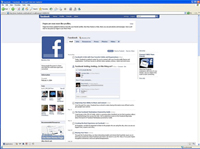Iran
With foreign journalists locked-up, Iranians turn to the Internet to spread info
Article published on the 2009-06-18 Latest update 2009-06-18 11:47 TU
The social networking sites MySpace and Facebook - blocked after they were briefly opened during the election campaign – are continuing to play a key role in getting out a citizen’s view of the protests in Tehran. Iranian expats living abroad are relaying images and videos sent to them by friends at home via these sites, providing the world’s only images of the mass gatherings despite the government censors’ best efforts.
Proxies, ways of accessing blocked websites by passing through a foreign Internet connection where the sites aren’t filtred, are also a key tool for Iranians. This also involves organisation of expatriates living abroad, who can securely set up the proxy and then communicate the access information to allies working on the ground.
Twitter has also proved to be an essential organising tool on the ground. With mobile phone and text message services monitored and often cut off, Twitter has emerged as the best way to spread information such as rally points for demonstrations and information about where police crack downs are occurring. Twitter even postponed a scheduled maintenance session Monday night, so not as to disrupt Iranian dissident activities, which have come to so rely on the service.









